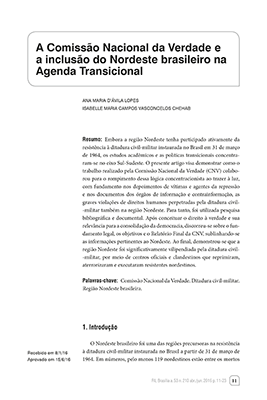Direito fundamental à greve e a Constituição de 1988: da sua amplitude no texto constitucional à restrição pelos tribunais
Rafael Borges de Souza Bias
Resumo
Este artigo explora a compatibilidade entre o sentido dado ao direito de greve pela Constituição da República Federativa do Brasil (CRFB) e as decisões proferidas em dissídios coletivos de greve pelo TRT-6, entre 2004 e 2016. Trata-se de uma pesquisa qualitativa, bibliográfica e documental, financiada pela Fundação de Amparo à Ciência e Tecnologia do Estado de Pernambuco e desenvolvida com base na Metodologia de Análise de Decisões, aplicada à avaliação de 35 acórdãos escolhidos por amostragem total. Passados trinta anos da promulgação da CRFB, constata-se que, no período focalizado, o exercício do direito de greve foi considerado legal pelo TRT-6 em apenas 13% dos julgamentos de mérito. A análise dos resultados, com base nas concepções de Richard Hare e de Robert Alexy, revela incoerências nos julgados e equívocos na aplicação do método de ponderação, o que tem praticamente aniquilado o direito de greve tal como previsto na Carta Magna de 1988.
Palavras-chave
Direito Fundamental. Greve. TRT-6. Prescritivismo Universal. Ponderação.
Título, resumo e palavras-chave em inglês
FUNDAMENTAL RIGHT TO STRIKE AND THE CONSTITUTION OF 1988: FROM ITS AMPLITUDE IN THE CONSTITUTIONAL TEXT TO THE RESTRICTION BY THE COURTS
ABSTRACT: This article explores the compatibility between the exercise of the right to strike by the Constitution of the Federative Republic of Brazil (CFRB) and the decisions made by the TRT-6 on strike class actions between 2004 and 2016. It is a bibliographical and documentary research on which the data were analyzed qualitatively, funded by the Foundation for Support to Science and Technology of the State of Pernambuco and based on the Methodology of Decision Analysis, applied to the evaluation of 35 judgments chosen by total sampling. Thirty years after the enactment of the Federal Constitution of 1988, it was found that, in the focal period, the exercise of the right to strike was considered legal by TRT-6 in only 13% of merit judgments. An analysis of the results, based on the views of Richard Hare and Robert Alexy, reveals incidences on judgments and misunderstandings in the application of the weighting method, which has practically annihilated the right to strike as provided in the Federal Constituition of 1988.
KEYWORDS: FUNDAMENTAL RIGTHS. STRIKE. TRT-6. UNIVERSAL PRESCRITIVISM. WEIGHTING.
Como citar este artigo
(ABNT)
BIAS, Rafael Borges de Souza. Direito fundamental à greve e a Constituição de 1988: da sua amplitude no texto constitucional à restrição pelos tribunais. Revista de Informação Legislativa: RIL, v. 55, n. 219, p. 263-290, jul./set. 2018. Disponível em: <http://www12.senado.leg.br/ril/edicoes/55/219/ril_v55_n219_p263>.
(APA)
Bias, R. B. de S. (2018). Direto fundamental à greve e a Constituição de 1988: da sua amplitude no texto constitucional à restrição pelos tribunais. Revista de Informação Legislativa: RIL, 55(219), 263-290. Recuperado de http://www12.senado.leg.br/ril/edicoes/55/219/ril_v55_n219_p263
